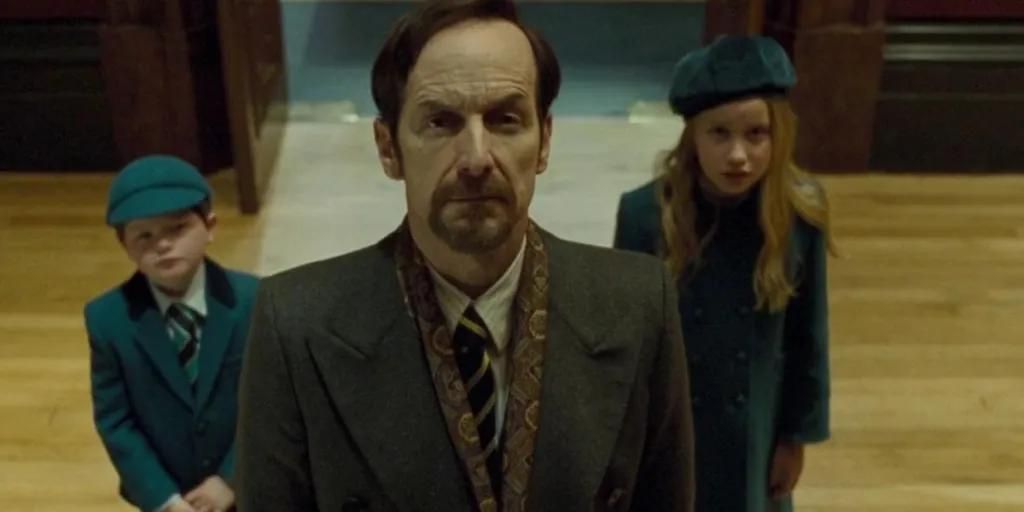The psychological crime thriller “The Postcard Killings,” directed by Bosnian director Danis Tanović (‘No Man’s Land,’ Tigers’), centers on NYPD detective Jacob Kanon (played by Jeffrey Dean Morgan), who sets out to find the person or people responsible for killing his daughter and her husband across Europe.
The film, which examines the idea of morality and the worth of art, provides a compelling look into the human psyche while taking place against the diverse and exotic landscapes of several well-known European locations. James Patterson and Liza Marklund’s 2010 book “The Postcard Killers” has been adapted for the big screen as “The Postcard Killings.”
The film commences with the horrific demise of Kanon’s recently married daughter and her spouse, whom he had dispatched to London for their honeymoon.
Their bodies have been dismembered and arranged in a manner that subsequently reveals itself to be reminiscent of a well-known work of art. Their blood has been drained out. It is revealed to Kanon and the investigating police officers that two serial killers are responsible for the deaths of joyful, young couples as they travel throughout Europe.
The deaths of Kanon’s daughter and her husband come after the initial deaths in Madrid. Similar murders are reported shortly after in Munich, Brussels, Stockholm, and Amsterdam. The killers leave a clue about the artwork they are imitating on a postcard they send to a local journalist before leaving for each destination.
A young American couple’s trip around Europe has also been portrayed, running concurrently with Kanon’s search for his daughter and her husband’s killers. It looks like this is Sylvia and Mac Randolph’s (Naomi Battrick and Ruairi O’Connor) first trip to Europe.

Even if the receipts are not hers, she still enjoys gathering them. On a train, she and Mac meet Pieter (Dylan Devonald Smith), a fascinating fellow passenger.
They get off at the next station since they are starting to feel uncomfortable with him. Eventually, their paths recross, and Pieter introduces them to his wife, Sallie Harmsen’s character Nienke.
Ending Explained
Kanon’s search for the murderers is the central narrative of “The Postcard Killings.” Therefore, the parallel plot of Mac and Sylvia looks a little odd at first, but then it becomes clear that we are seeing a peek into the lives of the serial killers and how they trap their victims.
For the duration of the first part of the movie, Tanović expertly has us believing Pieter is the serial killer. Kanon and the law enforcement officials conclude that Pieter and Nienke are working together as a pair shortly after his wife is introduced to the Randolphs, which seems to confirm our suspicions about both of them.
We learn that Mac and Sylvia are the ones who committed the crimes only after their bodies are found. They both seem quite convincing during the interview, so even then, there is a nagging doubt in our minds.
There isn’t exactly a whodunit in “The Postcard Killings.” The true killers are identified approximately halfway through the movie, and they never truly try to be anything else.
The psychological factors that could cause a once-innocent child to become a manipulative psychopath are the main emphasis of the film. Additionally, the movie aims to offer a critical analysis of the definition of art.
They both seem quite convincing during the interview, so even then, there is a nagging doubt in our minds. There isn’t exactly a whodunit in “The Postcard Killings.”

The true killers are identified approximately halfway through the movie, and they never truly try to be anything else.
The psychological factors that could cause a once-innocent child to become a manipulative psychopath are the main emphasis of the film. Additionally, the movie aims to offer a critical analysis of the definition of art. Just following the passing of his daughter.
Eventually, Kanon starts drinking himself to death because his grief consumes him so much. His downhill trajectory only comes to an end when his divorcée Valerie (Famke Janssen) storms into his flat and tosses the booze bottles into the garbage can.
He still experiences these intense moments of grief where he sobs uncontrollably or lashes out violently at the police officials handling his daughter’s case.
American expat living in Stockholm, Dessie Lombard (Cush Jumbo), who writes a cultural column for a local newspaper about her experiences in Sweden, lends her assistance to him. The notecard that Mac and Sylvia give her before they travel to Stockholm is the one that she gets.
Valerie starts her investigation to learn as much as she can about the young couple’s past while Kanon goes on a murderous rampage after them.
After discovering that Mac is Simon Haysmith, she finds out that his father, Simon Haysmith Sr., was a notorious embezzler who is presently serving a jail sentence for taking $300 million from Wall Street clients. The testimony of his son has resulted in his incarceration.
When Valerie meets Simon Sr., she rapidly learns about his character and his parenting style from him. The family’s neighbor subsequently confirms her fears. He had a history of abusing his kids, particularly his daughter Marina. Kanon and Lombard realize that Marina is the same person as Sylvia after receiving this information. It seems that their father did everything he could to break up the incestuous bond between Simon and Marina.
The movie has numerous allusions to the artwork “Saturn Devouring His Son” by Francisco Goya. Haysmith has “consumed their innocence,” according to Marina, who likens him to Saturn. She and Simon are essentially rebelling against their father’s authority through their killing spree.
All of their artistic knowledge comes from their father. Additionally, by using the bodies of their victims to recreate famous artworks, they are expressing their wrath and demanding understanding.
Lombard’s piece on the killings, which he published in the hopes of getting a response from Simon and Marina, had the desired outcome. They thank her by email for being understanding of their situation.
She is also the last victim they decide to target. The young serial killers begin pursuing her and Kanon as soon as they set foot in Helsinki, and they don’t let up. When Kanon shows up and shoots Simon, they have managed to capture Lombard and are getting her ready for the murder in a frozen field by the road.

Then he passes away in Marina’s arms. As they were both adopted, it was subsequently disclosed that Simon and Marina had no blood relation.
What Kanon refers to as “early genetic engineering at its finest” is that Haysmith had very clear requirements concerning the kind of children he wanted.
They don’t find either of their bodies. But Marina is the one who phones Haysmith in the prison, right before the movie closes. She will probably follow her father now that she is fully alive.
Is The Story Based On Real Life?
It is not true that “The Postcard Killings” is based on a factual story. Rather, it’s a movie based on a 2010 crime fiction book by internationally recognized American writer James Patterson and Swedish author and journalist Liza Marklund, who is best known for her mystery books.
Due to Patterson’s desire to write a thriller with the other author, whose books he had previously read and liked, the book represented the author’s first and only collaboration to date. Marklund was conversant with Patterson’s work as well, which facilitated a speedy agreement between the two.
As a result, Patterson started working with the Swedish author on drafts and exchanging emails after submitting a basic plot outline. This means that the novel’s original inspiration was a straightforward notion of cooperation rather than a true crime.
The book was chosen by Hollywood for an on-screen adaptation, but before it settled under Tanovic’s direction, it underwent several changes.
Thus, “The Postcard Killings” eventually found its footing thanks to several screenwriters who contributed to an original screenplay and a final script that was influenced by the former.

Consequently, the movie, while still deeply based on Patterson and Marklund’s book, is wholly a work of fiction that has been meticulously honed to its final shape by numerous individuals. However, the story, like many stories centred upon crime, manages to achieve a sense of realism despite having a fictitious foundation.
The macabre, artful sequences they create characterize the film’s major theme, the titular killings. After draining their victims’ blood, the murderer transforms their bodies into a startling recreation of well-known paintings. Additionally, the murderer sends local journalists coded postcards before they arrive at the place designated as the hunting area.

